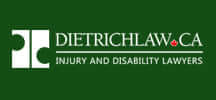- Home
- About Us
- Practice Areas
- Car and Truck Accidents
- Motorcycle Accidents
- Motor Vehicle Accident Benefits
- Catastrophic Injury
- Product Liability
- Brain Injury
- Spinal Cord Injury
- Disability Benefit Claims
- Slip, Trip and Fall Accidents
- Wrongful Death
- Pedestrian Accidents
- Cycling Accidents
- Premises Liability
- Municipal Liability
- Dog Bites
- Recreational Accidents
- Public Transit, Bus and Train Accidents
- Find a Lawyer
- Success Stories
- Contact Us
ILO Members serving Waterloo
 |
Find ILO Members by City: |
| More Ontario Cities | |
How can Collisions and Injuries be reduced in Waterloo Region? |
Residents of Waterloo Region have seen significant increases in traffic volumes and commute times, particularly on roads and intersections with nearby connections to Hwy 401 or the Conestoga Parkway. According to Stats Canada, the greater the population and size of a municipality, the longer the commute and often, the greater the stress. Many Waterloo area residents complain about a degraded driving experience: more delays, less courtesy among drivers, and a more tense and harried driving experience. A Region of Waterloo 2013 Report identified the 10 worst intersections for collisions, all of which were in Kitchener or Cambridge (http://www.cbc.ca/news/canada/kitchener-waterloo/10-worst-waterloo-region-intersections-for-collisions-revealed-1.2821346). City of Waterloo roads with the highest number of collisions are Columbia Street near Phillip and University near King St. Both have high traffic volumes as well as a large number of pedestrians and cyclists. Drivers are well- advised to take extra care when driving at all of these locations; however, many wonder what can be done to improve the traffic problems that are increasingly frustrating and potentially dangerous for everyone throughout the Region. In 2012, it was reported that collisions, fatalities and injuries per 1,000 people have declined in the past 10 years. However, collisions with pedestrians, and even more so, with cyclists are rising. In 2012, there were 130 cyclists struck by vehicles compared to 104 in the year before. Cambridge Mayor Doug Craig remarked that the increase in collisions with cyclists is alarming and implies disrespect between motorists and people on bicycles. Geoff Lorentz, Regional Councillor and Vice-chair of the Planning and Works Committee has blamed the radial road design, a legacy of early development in the Region, as the reason for many of the traffic problems in the area. Intersections with a huge traffic volume, such as the intersection of Homer Watson and Ottawa St, experience some of the worst records in terms of vehicle collisions. One intended solution for this and other such intersections is the installation of a roundabout at these locations. A Waterloo Region report concludes that roundabouts affect fewer collisions resulting in injuries, better management of increased traffic and eliminate unnecessary stops (and thus less emissions). The roundabout at Homer Watson is a gross exception in terms of road safety improvement: the total number of crashes has increased from about 10 annually prior to the installation of the roundabout to 72 crashes annually by the end of 2014, and crashes resulting in injury have also doubled during this time period. A strong argument for roundabouts is that there are fewer accidents resulting in fatalities; an analysis of collisions between 2009 and 2013 by The Record, revealed that there were far more fatalities at traffic signals (9 killed) but none at roundabouts. Roundabout collisions are typically fender-benders with minor injuries. The Record’s study also exposed the fact that the number of fender-benders and non-fatal injuries in roundabouts has doubled in Waterloo Region over 5 years, painting a somewhat troubling picture for drivers. Councillor Tom Galloway, Chair of the Waterloo Region Police Services Board, places some of the blame for accidents at roundabouts on the fact that the Ontario government has not written traffic legislation under the Highway Traffic Act for this infrastructure. This lack of legislation makes it difficult for drivers to understand the rules and also, for police to enforce what might normally be considered as ‘violations’. Galloway criticizes people for going too fast and not signalling when they are leaving a roundabout. The Record study concluded that Waterloo Region drivers are demonstrating no progress in safe driving practices on roundabouts. In May 2015, the City of Waterloo approved segregated bike lanes along King Street. This decision was made after much public input from local residents. Some voiced the concern that although cycling on the sidewalk was problematic for pedestrians particularly in areas of high volume, many cyclists do not feel safe, on busy roadways. Also, bike lanes do not resolve all of the safety concerns because most vehicle collisions with cyclists occur at intersections, which cyclists will still have to cross. However, many studies have determined that the more cyclists on our roads, the fewer the accidents. The implementation of bike lanes will likely lead to increases in cycling activity, which in turn, will hopefully force drivers to be more cautious and on the lookout for cyclists before making turns at intersections. Few will deny that cyclists and motorcyclists are at greatest risk when colliding with a car, truck or another object. In July 2015 alone, there were multiple motorcycle collisions in the Waterloo area, resulting in serious injuries or death. A 24 year old motorcyclist sustained catastrophic injuries resulting in death when he collided with an SUV on Steffler Road, southeast of Elmira. Although the SUV rolled onto its side, the occupants, a mother and 2 children sustained only minor injuries. A pickup truck struck a 26 year old motorcyclist on Silvercreek Parkway, resulting in serious injuries to the motorcycle driver. The truck driver was charged with a failure to yield to traffic. There were also 2 single vehicle motorcycle accidents. One involved a 23 year old who died after crashing into a tree in the Conestoga College parking lot. A few days later, a 54 year old woman and man were critically injured after crashing into parked cars in Waterloo. Alcohol may have been a factor in the latter incident. Although the reasons for all of these accidents were varied, the vulnerability of cyclists and greater need for caution is undeniable. There is clearly no one solution for safer driving conditions in Waterloo Region. Many believe that the expansion of cycling lanes into all of the municipalities would be helpful in creating safer routes as well as encouraging more of this healthier and less polluting form of travel. Media education campaigns are necessary to encourage various safe driving practices, notably, to teach roundabout driving rules and also, to facilitate caution and respect between motorists, cyclists and pedestrians. The absence of clarity on roundabout driving etiquette and lack of specific Ontario legislation will continue to result in more accidents and injuries than would otherwise occur and may, in some cases, make it more difficult for accident victims to make a case against the person believed to be responsible for the collision. If you or a family member were seriously injured in a motor vehicle collision, the Waterloo Personal Injury Lawyers of Ontario (ILO) law group can provide the expertise and advise that will allow you to make a successful claim for damages. We have extensive knowledge of personal injury legislation pertaining to long-term disability claims, wrongful death, slip and fall accident claims, brain and spinal injury and product liability issues. Call us today for a free initial consultation. |
| FREE CONSULTATION |
| 1.844.445.4456 TOLL FREE |
QuicklinksHomeAbout Us Find a Lawyer Success Stories Contact Us |
Practice AreasCar and Truck AccidentsMotorcycle Accidents Motor Vehicle Accident Benefits Catastrophic Injury Product Liability |
Brain InjurySpinal Cord Injury Disability Benefit Claims Slip, Trip and Fall Accidents Wrongful Death |
Get in TouchGoogle+YouTube |
 |
Injury Lawyers of Ontario™ law firms are Ontario Personal Injury Lawyers providing experienced legal representation to clients in cities across Ontario, including: Barrie, Brampton, Hamilton, Kingston, Kitchener, London, Markham, Mississauga, Oakville, Oshawa, Ottawa, St. Catharines, Sudbury, Thunder Bay, Toronto, Vaughan, Waterloo, and Windsor. © 2014 - 2025 Injury Lawyers of Ontario, Inc. Privacy Policy Disclaimer Site Map Mobile Site For Lawyers Proud Member Seals |
||||


